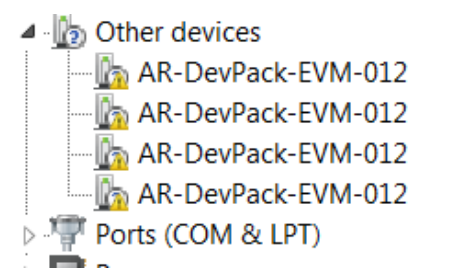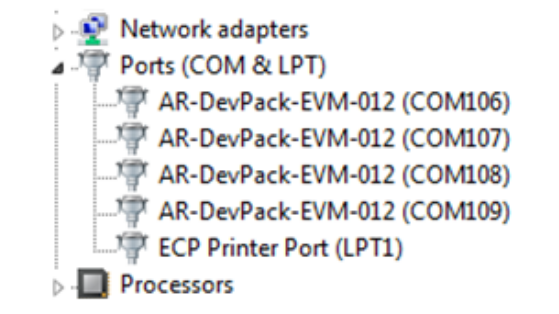SWRU620 April 2024
2.9 FTDI Interface
J10 provides access to the onboard FTDI ports. This provides the following interfaces to the PC:
- FTDI Port A -> SPI interface
- FTDI Port B-> Host INTR signal.
- FTDI Port C -> NRESET control signal.
- FTDI Port D -> SOP0, SOP1 control signals
When the USB is connected for the first time to the PC, a possibility is that Windows® does not recognize the device. This is indicated in the device manager with yellow exclamation marks, as shown in Figure 3-26.
 Figure 2-26 Uninstalled FTDI
Drivers
Figure 2-26 Uninstalled FTDI
DriversTo install the devices, download the latest FTDI drivers available in Section 3.3. Right click on these devices, and update the drivers by pointing to the location where the FTDI drivers were installed (C:\ti\mmwave_sdk_<version_number>\tools\ftdi). This must be done for all four COM ports. When all four COM ports are installed, the device manager recognizes these devices and indicates the COM port numbers, as shown in .Figure 3-27
 Figure 2-27 Installed FTDI Drivers
Figure 2-27 Installed FTDI Drivers